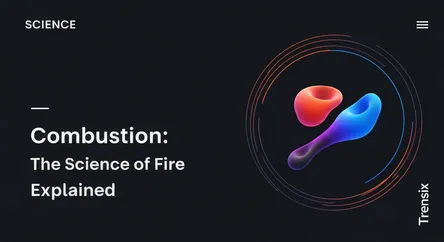Science
Combustion: The Science of Fire Explained

An essential guide to combustion, the chemical reaction that powers our world, from car engines to power plants, and its environmental impact.
What is it?
Combustion is a high-temperature chemical reaction between a fuel and an oxidant, typically atmospheric oxygen, that produces heat and light. In its most common form, it's what we know as fire or burning. This process is an exothermic redox reaction, meaning it releases energy and involves the transfer of electrons. For combustion to occur, three elements are needed: a source of heat, a fuel (like wood or gasoline), and an oxidizing agent (usually oxygen). This is often referred to as the "fire triangle." The products of complete combustion are typically carbon dioxide and water, along with the released energy.
Why is it trending?
Combustion remains a critical topic due to its central role in energy production and its environmental consequences. Scientists and engineers are continuously researching ways to make combustion more efficient and cleaner. This includes developing advanced engine technologies, creating cleaner-burning fuels, and improving industrial processes to reduce harmful emissions like nitrogen oxides and particulate matter. The global conversation around climate change keeps combustion in the spotlight, driving innovation toward carbon-capture technologies and alternative energy sources that can replace traditional combustion-based systems.
How does it affect people?
Combustion is fundamental to modern civilization. It powers the internal combustion engines in most vehicles, generates the majority of the world's electricity in thermal power plants, and heats our homes and cooks our food. However, the byproducts of incomplete or fossil fuel combustion are major contributors to air pollution and greenhouse gas emissions, which are linked to respiratory illnesses and global warming. This dual role—as both an essential energy source and a primary pollutant—places combustion at the center of many societal challenges, from public health to international climate policy.